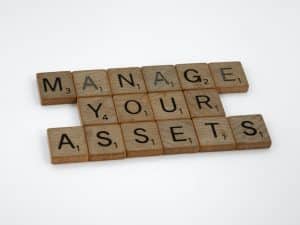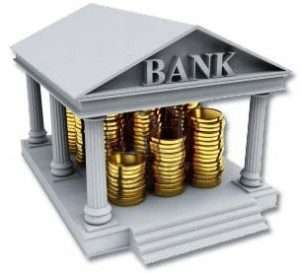Is Accumulated Depreciation an Asset or Liability?

Many people wonder whether accumulated depreciation is an asset or a liability. It is listed on a company’s balance sheet, yet it does not fit the criteria of a typical asset. To explain this, let us dive into the concept. Is accumulated depreciation an asset or liability?
What is Accumulated Depreciation?
Accumulated depreciation is the sum of all depreciation recorded for an asset. It’s a contra-asset account and reduces the asset value on the balance sheet.
While it is listed as an asset, it is a contra-asset account that offsets the original cost of the assets. It has no economic value, nor does it generate income. A suggestion is to list it separately from other assets in financial statements, so stakeholders understand its distinct role.
Another suggestion is to include footnotes with explanations, detailing how it affects profitability and net worth calculations. This allows readers to comprehend its implications when analyzing financial data.
By doing this, companies can present their financial info accurately and clearly, giving investors and stakeholders a comprehensive view of their fixed assets and their corresponding depreciation. This eliminates any doubt over its classification and ensures a more informed financial analysis.
A table can be made to understand the concept better. It’ll have columns such as:
- Asset Name
- Acquisition Cost
- Accumulated Depreciation
- Carrying Value
The Asset Name column will list assets like buildings and machinery. The Acquisition Cost column will show the original cost of the asset. The Accumulated Depreciation column will show the total amount of depreciation recorded over time for each asset. The Carrying Value column will show the net value of each asset after deducting accumulated depreciation from its initial cost.
It’s important to note that accumulated depreciation is not an asset or liability. It shows how much the asset’s value has reduced due to wear and tear or obsolescence. It’s a negative amount on the balance sheet, yet it helps provide a more accurate representation of an organization’s asset valuation.
Suggestions should be followed to manage accumulated depreciation properly:
- Assessments should be done to check if an asset’s useful life needs adjusting or if there are any changes in expected salvage value.
- Tracking maintenance and repair costs of assets helps estimate future depreciation costs.
- Documentation must be kept about impairment losses for assets that have declined in value.
Following these suggestions helps organizations better manage their assets. It allows them to make informed decisions about replacing or disposing of aging equipment or facilities. Accurately accounting for accumulated depreciation ensures transparency and accuracy in financial reporting processes. It also helps stakeholders evaluate an organization’s financial health.
Understanding Assets and Liabilities
Accumulated depreciation is the total amount of depreciation expense allocated for fixed assets, like buildings and equipment, over time. This reflects their decreasing value due to wear and tear, obsolescence, or other factors.
To gain a clear understanding of assets and liabilities, delve into the section “Understanding Assets and Liabilities” with a focus on the sub-sections: “Definition of Assets” and “Definition of Liabilities.” Explore the intricacies of these two financial concepts and their respective roles in the accounting realm.
Definition of Assets
Assets are valuable resources with economic worth, that can be used to gain future benefits. To manage personal finances or own a successful biz, it’s imperative to understand the definition of assets. Assets can be divided into categories based on their traits and nature.
The following table displays different categories of assets:
| Category | Examples |
|---|---|
| Current Assets | Cash, Inventory |
| Fixed Assets | Buildings, Vehicles |
| Intangible Assets | Trademarks, Patents |
| Financial Assets | Stocks, Bonds |
Apart from physical possessions such as buildings and vehicles, intangible assets like trademarks and patents also store value. Financial assets, such as stocks and bonds, are also part of an individual’s or organization’s asset portfolio.
It’s essential to take into account the depreciation of fixed assets over time. Due to wear and tear or obsolescence, these assets gradually lose value. Additionally, it’s beneficial to grasp the difference between tangible and intangible assets to evaluate the total worth of an asset pool.
I recently heard a captivating tale about a small startup company that saw the value of its intellectual property as an intangible asset. Through appropriate patenting strategies and branding efforts, the company not only increased its valuation but drew potential investors who noticed their cutting-edge ideas’ great potential. This real-life example displays how managing assets wisely can be essential for achieving success.
Definition of Liabilities
Liabilities are debts owed by an individual or company. They must be paid back in the future, in cash or other assets. Knowing your liabilities is important, as it affects financial health and stability.
Liabilities come in many forms – loans, mortgages, credit card debt, or unpaid bills. They can be from banks, credit purchases, or contracts with suppliers or employees.
These liabilities come with an obligation to make payments – current if due in a year, or long-term if due later.
John had a great idea and borrowed money to start his business. But unexpected challenges meant he couldn’t pay back the loan on time. This caused interest and penalty fees to build up, increasing his overall liabilities. So, John had to look for more money and work harder to sort things out.
Explaining Accumulated Depreciation
To understand accumulated depreciation as an asset or liability, delve into the section explaining accumulated depreciation. Discover the definition and purpose, along with the accounting treatment, as solutions for differentiating the nature of accumulated depreciation.
Definition and Purpose
Accumulated depreciation is an important concept. It means the total amount taken off an asset’s value over its life. Its purpose is to show the value lost due to wear and tear, aging, or becoming obsolete.
Businesses need accumulated depreciation to work out an asset’s net book value. They do this by taking away the accumulated depreciation from the asset’s original cost. This helps them decide when to repair, replace, or sell a thing.
Accumulated depreciation is also important in financial reporting. Companies spread the cost of a thing over its life using straight-line or accelerated depreciation. This links the cost with revenue made from the asset.
Suggestions for managing accumulated depreciation:
- Calculate and record depreciation each period.
- Review and reassess assets’ lives regularly.
- Maintain and upgrade assets to increase their life.
- Consider leasing rather than buying.
Accounting Treatment
Accounting Treatment is the way depreciation is recorded and reported in financial statements. It captures the decrease in value of assets from wear and tear, obsolescence, etc. This info is essential for correct financial reporting and decision-making.
Look at the table below to understand Accounting Treatment of accumulated depreciation:
| Asset | Cost | Accumulated Depreciation | Net Book Value |
|---|---|---|---|
| Machine A | $10,000 | $2,500 | $7,500 |
| Vehicle B | $20,000 | $5,000 | $15,000 |
| Building C | $100,000 | $20,000 | $80,000 |
The first column is the company’s assets. The second column shows the initial cost of each asset. The third column displays the accumulated depreciation for each asset. Finally, the fourth column indicates the net book value after deducting the accumulated depreciation from the initial cost.
Remember, these values change as more depreciation is incurred over time.
Accumulated Depreciation, an Asset or Liability?
To understand whether accumulated depreciation is an asset or liability, let’s dive into the arguments for considering it as an asset and the arguments for perceiving it as a liability. We will explore these perspectives, shedding light on the contrasting views surrounding this accounting concept.
Arguments for Accumulating Depreciation as an Asset
Accumulated depreciation can be seen as an asset due to its importance in financial statements. Let’s explore the reasons why this is the case.
- Accumulated depreciation shows the decrease in value of long-term assets over time. This is because of normal wear and tear, obsolescence, or other factors that affect the asset’s usefulness. It is important for accurate financial reporting and helps companies plan for their future capital expenses.
Now, let’s have a look at the arguments in favor of accumulated depreciation being considered as an asset:
- Matching Principle: The matching principle requires that expenses be aligned with revenues in the same accounting period. Recording accumulated depreciation lets companies spread out the cost of an asset over its useful life.
- Balance Sheet: Accumulated depreciation is present on balance sheets and reduces the carrying value of fixed assets. This works just like other tangible assets, such as land or equipment.
- Replacement Value: Accumulated depreciation gives an idea of an asset’s condition by showing how much of its original value has been expensed. This helps management decide if repairs, replacements, or upgrades are needed.
- Loan Collateral: Some lenders may take into account accumulated depreciation when evaluating a company’s loan repayment ability or assessing collateral value. This shows that despite wear and tear, the company has valuable physical assets.
- Tax Deductions: Governments often allow companies to deduct accumulated depreciation from taxable income. This lowers tax liability and improves cash flow, freeing up resources for operations or investments.
It is worth noting that while accumulated depreciation is considered an asset, it does not represent cash or physical items which can be used directly.
Pro Tip: Investors should look at the accumulated depreciation balance to get a better idea of a company’s asset base and potential for future growth.
Arguments for Accumulated Depreciation as a Liability
Accumulated depreciation has a double nature: it is a contra-asset on the balance sheet, but also a liability. It affects an asset’s value and future financial obligations.
To understand further, let’s look at how it affects asset values:
| Accumulated Depreciation | Liability or Asset Value |
|---|---|
| Equipment | Decreases |
| Buildings | Decreases |
| Vehicles | Decreases |
Accumulated depreciation causes a decrease in asset values: it is a liability that reduces an organization’s assets’ net value.
It is essential to remember that accumulated depreciation is not just an accounting entry, but a representation of the wear and tear of tangible assets over their useful lives. Organizations should be aware of this to plan for replacement costs and accurately value their assets.
The history of the concept is interesting. Initially, it was seen solely as an asset, then debated and discussed when reclassified as a contra-asset. Eventually, experts realized its effects on asset values and began to consider it a liability.
Accumulated Depreciation
Accumulated depreciation is a key concept to comprehend. Here are the main points:
- It’s an offsetting account that reduces the value of a fixed asset.
- It is a contra asset account with a credit balance which is subtracted from the asset’s cost.
- It’s not considered an asset, since it has no physical existence or future benefits.
- It’s an accounting measure to show the decline in value of an asset due to aging, etc.
- It decreases the book value, however it doesn’t change market value or cash flow.
- For financial reporting, it appears as a line item on the balance sheet.
Let’s apply this to a real situation: a car worth $20,000. After 5 years, regular use would make it depreciate by $4,000 each year. Accumulated depreciation would be $20,000. But, this doesn’t mean it’s an asset or liability.
In short, accumulated depreciation is an essential part of showing the true value of fixed assets after taking into account their wear and tear. However, it’s not an asset or liability.
Frequently Asked Questions
 1. Is accumulated depreciation an asset or liability?
1. Is accumulated depreciation an asset or liability?
Accumulated depreciation is a contra asset account and is classified as a liability on the balance sheet. It represents the total amount of depreciation expense that has been recorded over the life of a fixed asset.
2. Why is accumulated depreciation considered a liability?
Accumulated depreciation is considered a liability because it represents the accumulated amount of depreciation that has been charged against an asset. It reduces the carrying value of the asset, indicating the amount of its estimated value that has been utilized or consumed.
3. Can accumulated depreciation ever be a positive value?
Yes, accumulated depreciation can have a positive value. It typically starts as zero and increases over time as depreciation expenses are recorded. However, it is important to note that even though it may be a positive value, it is still classified as a liability on the balance sheet.
4. How does accumulated depreciation relate to the book value of an asset?
Accumulated depreciation subtracts from the original cost of an asset to determine its net book value. The net book value is the asset’s carrying value on the balance sheet and represents the remaining value of the asset after accounting for depreciation.
5. Is accumulated depreciation the same as depreciation expense?
No, accumulated depreciation and depreciation expense are not the same. Depreciation expense is the amount of depreciation recorded in a specific accounting period, while accumulated depreciation is the total sum of depreciation expense recorded since the asset was acquired.
6. How is accumulated depreciation reported on financial statements?
Accumulated depreciation is reported as a deduction from the corresponding asset on the balance sheet. It appears alongside the asset’s original cost and the resulting net book value.
















Leave a Reply